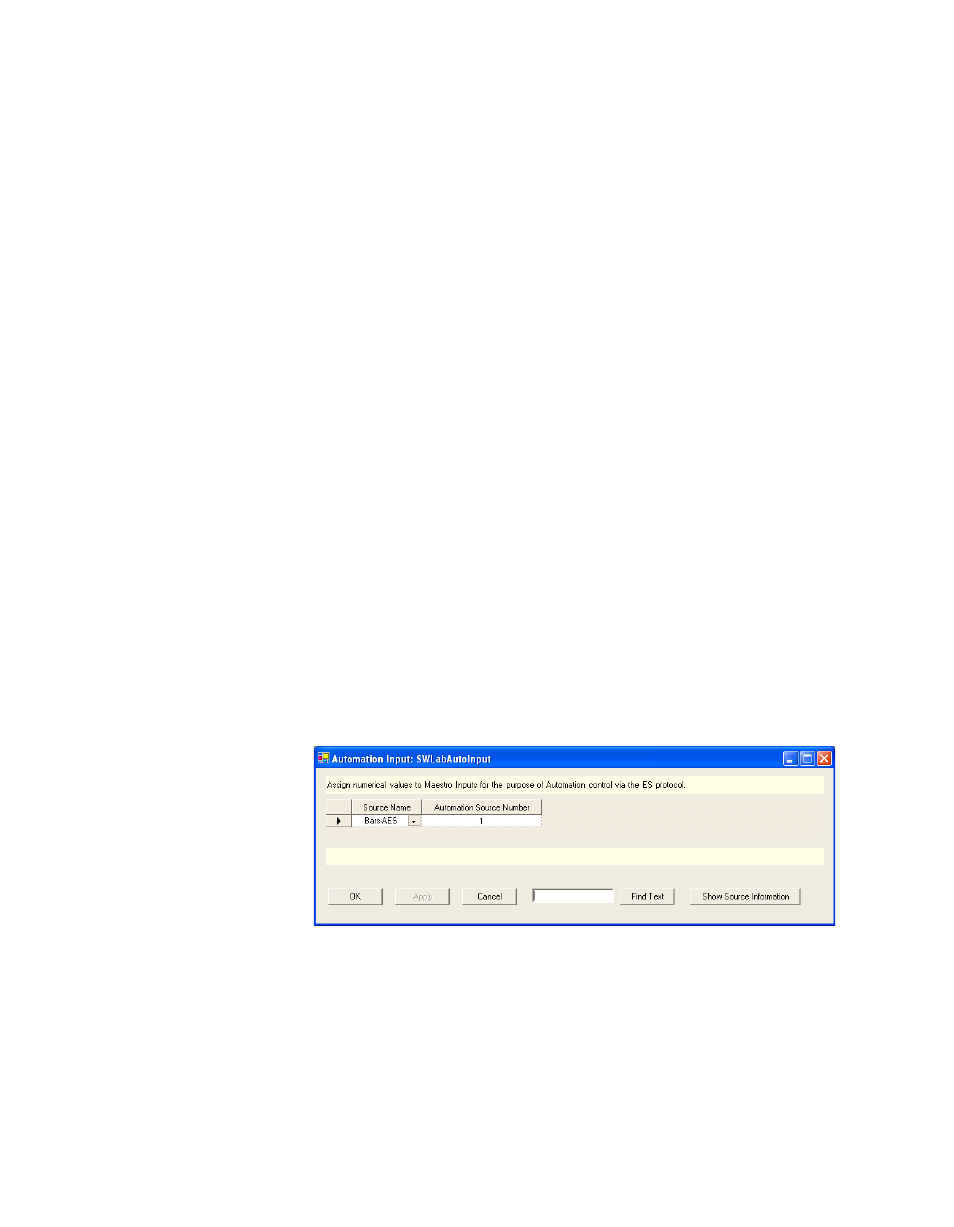Grass Valley Maestro Master Control v.1.7 User Manual
Page 133

Maestro Channel Branding User Guide
129
3rd Step: Audio Sets
In general, remapping in the Audio Input tables is used for sources that do
not change dynamically or for those sources that have a few possible con-
figurations. (Audio Input sets are assigned to sources using the Input table,
.)
There are a number of primary uses for the Audio Input tables:
•
Standard input mapping (1:1)
•
Correcting format differences
•
Audio group substitution
•
Down-mix / up-mix mapping
•
Combinations of all the above
These categories are described below.
Standard Input Mapping (1:1)
The Audio Input table is really a matrix of inputs and outputs representing
the 16 input and 16 output channels. Each cell in the table can contain a
gain value in dB. A value of "0" means a unity gain value for that input/
output combination. The values are the contribution of the input channel
to the output channel. The range of values is blank or OFF, or from -51.1 dB
to 0 dB (Unity gain) with 0.1 dB resolution.
Standard or 1:1 input mapping has been the default input mapping in all
software versions before 1.3. This method maps the input channels to the
output channels one-to-one.
shows 10 audio channels spread
across four audio groups, the input table maps each input channel to the
corresponding output channel.
Figure 98. 1:1 Input Mapping
Correcting Format Differences
The input tables can be used to fix format differences in sources. A good
example is a VTR or disk server that may have many different programs
with different audio channels but is always connected to the Maestro as a
stereo pair of channels. For example, it is standard in many facilities to use
the left channel only for mono programs.
